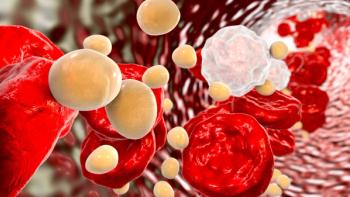
Patients Presenting With Herpes Zoster May Have Underlying COVID-19 Infection
The authors of the study suggest that any patient with HZ should be tested for COVID-19, even if the individual has mild symptoms or no history of upper respiratory symptoms.
Individuals presenting with herpes zoster (HZ) during the pandemic may be positive for COVID-19, according to a study published in Dermatologic Therapy. The authors of the study suggest that any patient with HZ should be tested for COVID-19, even if the individual has mild symptoms or no history of upper respiratory symptoms.
A number of skin manifestations have been reported in association with COVID-19, including maculopapular eruptions, morbilliform rashes, urticaria, chickenpox‐like lesions, livedo reticularis, COVID toe, erythema multiforme, and pityriasis rosea. The researchers reviewed 2 case studies of patients presenting with HZ who tested positive for COVID-19 shortly thereafter. In both cases, patients had almost no relevant medical history save for hypertension.
In the first case, a patient 68 years of age presented with painful blisters and gave a history of initial stabbing pain followed by onset of blisters. The patient developed a heavy cough, sore throat, dyspnea, and fever that required hospitalization 2 days following the initial presentation. A nasopharyngeal smear test revealed a COVID‐19 infection.
In the second case, a patient 60 years of age attended the dermatology clinic with low grade fever and a vesicular painful rash, presenting with a painful, itchy, vesicular rash affecting the left side of her chest and nape of the neck. The patient was gasping and dyspneic at the time of presentation, which was initially believed to be the result of seasonal allergies. She was advised to consult a pulmonologist, which led to a chest x‐ray and a positive nasopharyngeal smear test, which were consistent with COVID‐19 infection.
According to the study authors, several other studies agreed that COVID-19 infection is associated mostly with reduction in lymphocytes, monocytes, and eosinophils with drastically reduced numbers of CD4+ T cells, CD8+ T cells, B cells, and natural killer (NK) cells. Additionally, the follow‐up of the dynamic changes of the lymphocyte counts along the course of the disease showed that non-survivors developed more severe lymphopenia over time.
The investigators said it is reasonable to hypothesize that SARS‐CoV‐2 could directly infect lymphocytes, particularly T cells, and initiate or promote the cell death of lymphocytes, which eventually lead to lymphopenia and impaired antiviral responses. They suggest that the clinical presentation of HZ during the COVID-19 pandemic, even in patients giving mild or no suggestive history of upper respiratory symptoms, should be considered as an alarming sign for a recent subclinical SARS CoV2 infection.
A thorough follow-up of patients presenting with HZ is important, including advice for COVID-19 exclusion, according to the study authors, as these patients could unknowingly infect others and contribute to the spread of COVID‐19.
Further studies are recommended by the authors in order to determine the efficacy of the use of broad immunosuppression in patients with overwhelming viral illness, as beneficial anti‐inflammatory effects should be always weighed up against delay of virus clearance.
REFERENCE
Mohamed L. Elsaie, Eman A. Youssef, Hesham A. Nada. Herpes zoster might be an indicator for latent COVID 19 infection. Dermatol Ther. Jul 2020;33(4):e13666. doi: 10.1111/dth.13666.
Newsletter
Stay informed on drug updates, treatment guidelines, and pharmacy practice trends—subscribe to Pharmacy Times for weekly clinical insights.



















































































































































































































